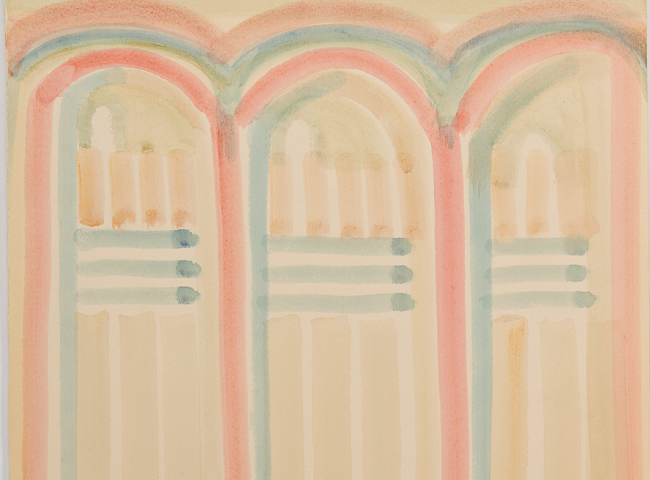
ECTOPLASMIX
05.10.25 > 30.11.25
Ectoplasm is a scientific term rooted in biology. The word comes from the Greek ektos or ἔκτος) meaning outside, and plasma (or πλάσμα), meaning something formed or moulded.
The word was first coined in 1856 by Thomas Henry Huxley, the English anatomist and close ally of Charles Darwin. Huxley used the word to describe the transparent outer layer of cytoplasm in protozoa, as distinct from the granular inner endoplasm.
In 1894 the French physiologist Charles Richet ascribed the term to the mysterious substance he had seen emitted by mediums during the course of a séance. For him, the term conveyed both the firm external nature of the output, as well as its more organic and jelly-like qualities.
The tendency to frame spiritualist phenomena in scientific language was not uncommon. Spiritualist literature from began using the term widely; and by the early 20th century it was commonly associated with this physical manifestation of the dead. Ectoplasm’s time had come; and it became a central feature of séances across Europe, North America and beyond.
Mediums such as Eusapia Palladino in Italy, Eva Carrière in France/Germany, and Mina Margery Crandon in the United States, were known for producing a white or translucent substance that could form shapes, faces or limbs. Spiritualist circles reported similar occurrences in Scandinavia, Eastern Europe and South America, with photographic and written documentation circulated in journals and books devoted to psychical research.
Photography provided a means of memorialising this other-worldly effervescence. Emerging practitioners like William Hope in Britain and Thomas Glendinning Hamilton in Canada, produced plates taken in controlled séance settings. They revealed mediums exuding fibrous material and surrounded by cloud-like formations. Collections of evidence were compiled by psychical researchers like Albert von Schrenck-Notzing in Phenomena of Materialisation (1913/23), exhibited by spritualist societies and then used as proof in public demonstrations.
As ever-increasing volumes ectoplasm were seen to emerge from the mouths, noses and ears of mediums around the world, it was clear that ectoplasm’s moment had come.
First-hand reports were equivocal. Witnesses described ectoplasm as cold, damp, unpleasant to the touch. Investigations by the Society for Psychical Research - not to mention a number of formal police inquiries - recorded more mundane materialities: cheesecloth, gauze, tissue paper, egg white, even animal lung tissue. The magician Harry Houdini proved that such unearthly matter could easily be concealed in the mouth, nose, or under the undergarments.
Ectoplasm was always a survivor. In the 1920s it emerged in glorious multicolour through the creative digits of mediumistic art-makers. Notable cosmic flows appeared in the drawings of Frantisek Jaroslav Pecka, a Czech paleontologist and covert spiritualist. His was an organic plasma oozing from every ghostly orifice and framing its subjects in psychedelic issuance.
Similar variations were seen in England in the work of Austin Osman Spare, the prolific illustrator and dandy, whose occultish output referenced all manner of non-corporeal tracing. Even Madge Gill, the East End medium and visionary, was prone to referencing emittances within a monochome palette of cross-hatched energy waves and mystical architectures.
Now, almost 100 years later, contemporary artists continue to be drawn in by the apparent malleability of the ectoplasmic realm.
The late artist Mike Kelley assembled an illustrious series of photos in 1978, as did the British multi-disciplinary artist Susan Hiller in 2012. Artist Tony Oursler regularly refers to ectoplasm in his work and has assembled one of the most significant archive of drawings, paintings and photographs, published as Imponderable in 2015. More recently, artists Paul Noble and Mathew Weir have created works inspired by their own ectoplasmic research.
Ectoplasmix aims to bring such investigation to a head, and to decide whether this beautiful, esoteric and elusive form can bring historic resonance to a cynical today.
References
· Richet, Charles. Thirty Years of Psychical Research. New York: Macmillan, 1923.
· Schrenck-Notzing, Albert von. Phenomena of Materialisation. London: Kegan Paul, 1923
· Oppenheim, Janet. The Other World: Spiritualism and Psychical Research in England, 1850–1914. Cambridge University Press, 1985.
· Hamilton, T.G. Intention and Survival. Toronto: University of Toronto Press, 1942.
· College of Psychic Studies, London. “Photography and Ectoplasm Collection.” [archival catalogue]
The Gallery of Everything invites you to its annual Frieze Week party: a multi-gallery event spanning three spaces on Chiltern Street in Marylebone.
On display the gallery presents Ectoplasmix: an investigation into otherworldly energies and extra-terrestrial goop, by historic and contemporary authors.
Drinks and food will be served, with live music and more.
Please RSVP as space is limited.
WHAT Chiltern Street Art Party
WHERE The Gallery of Everything, 4 Chiltern Street W1
WHEN 2 - 6pm, Sunday 12th October 2025
RSV ge@gallevery.com


